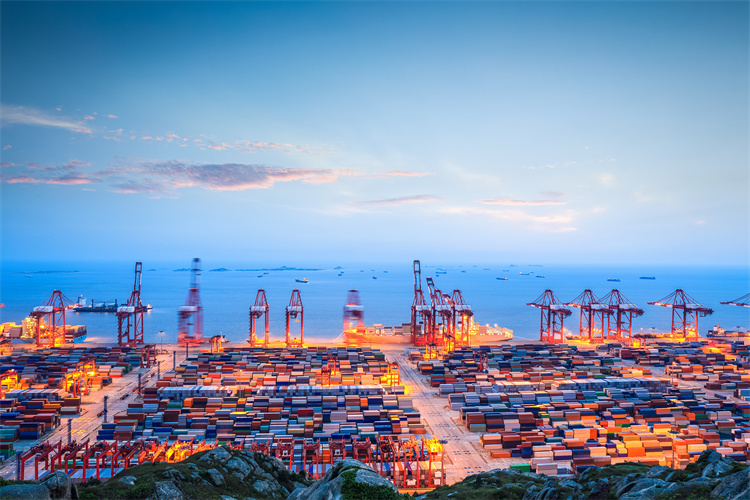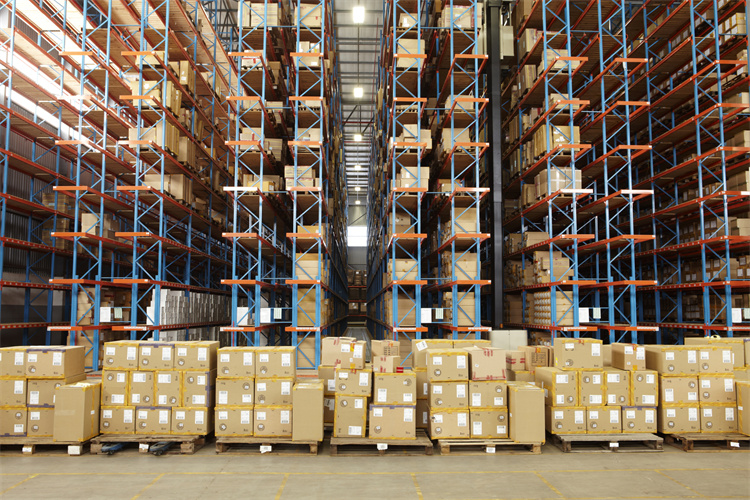The Importance of E-commerce Logistics in 2025

E-commerce logistics forms the backbone of online retail, ensuring goods move seamlessly from warehouses to customers. You rely on it for timely deliveries, real-time tracking, and secure handling of orders. With the rise of online shopping, companies now use advanced tools like route optimization software and enhanced inventory systems to meet your expectations for faster shipping and seamless returns. The global e-commerce logistics market is projected to grow significantly, reaching $848.87 billion by 2025, driven by increasing demand in regions like Asia-Pacific. This growth highlights its critical role in shaping the future of online retail.
Key Takeaways
E-commerce logistics is key for fast deliveries and happy customers. Companies need to focus on shipping on time to gain trust and get repeat buyers.
New tools like AI and robots are changing logistics. These tools make work faster, cut costs, and make shopping better.
Being eco-friendly is now important in logistics. Using green methods helps the planet and gives shoppers what they want.
Understanding E-commerce Logistics

Core Components of E-commerce Logistics
E-commerce logistics involves several interconnected components that ensure smooth operations. These include:
Storage: This involves receiving, verifying, and securely storing goods before they are picked and shipped.
Information Systems: Tools like warehouse management systems (WMS) help manage high distribution volumes efficiently.
Last-Mile Delivery: This focuses on shipping orders to customers, including packing, labeling, and route planning.
Each component plays a vital role in ensuring that products reach customers on time. For example, suppliers maintain a steady flow of goods, while fulfillment centers strategically store inventory to reduce delivery times. Advanced technology, such as real-time tracking, enhances transparency and customer satisfaction.
Component | Role in E-commerce Logistics | Interaction for Smooth Operations |
|---|---|---|
Suppliers | Ensure a steady flow of products and collaborate with e-commerce platforms to predict demand. | Help maintain inventory levels to avoid surplus or shortages, ensuring product availability. |
Fulfillment Centers | Store inventory strategically to reduce delivery times. | Facilitate quick order processing and accurate stock management, enhancing customer satisfaction. |
Distribution Hubs | Act as central points for receiving, sorting, and dispatching goods. | Minimize delays and errors in order processing, optimizing the logistics chain. |
The Role of Warehousing and Inventory Management
Warehousing and inventory management form the backbone of e-commerce logistics. You rely on these systems to ensure products are available when you need them. Modern warehouses integrate advanced technologies like AI and machine learning to improve efficiency. Real-time inventory tracking ensures visibility across platforms, reducing discrepancies and enhancing order accuracy.
Key trends in this area include:
Increasing order volume and complexity.
Multi-channel selling to meet diverse customer needs.
Adoption of cloud-based warehouse management systems for better scalability.
Sustainable practices to reduce environmental impact.
Efficient inventory management also involves processes like receiving, storing, and picking items accurately. For example, placing fast-moving products near shipping areas can speed up order fulfillment.
Last-Mile Delivery and Its Challenges
Last-mile delivery is the final step in e-commerce logistics, where products reach your doorstep. However, this stage faces several challenges:
Rising customer expectations for faster delivery.
Route optimization to reduce costs and delivery times.
Environmental concerns, such as emissions from delivery vehicles.
High return rates, which increase operational costs.
Companies address these issues by adopting innovative solutions like electric vehicles, real-time tracking, and route optimization tools. For instance, parcel consolidation reduces shipping costs by grouping packages for efficient delivery. These strategies not only improve efficiency but also enhance your overall experience as a customer.
Why E-commerce Logistics is Crucial for Online Retail
Enhancing Customer Satisfaction Through Timely Delivery
Timely delivery plays a vital role in shaping your shopping experience. When your orders arrive on time, it builds trust and encourages you to shop again. Studies show that an on-time delivery rate of 95% or higher is considered excellent. However, over 20% of shoppers avoid returning to a store after experiencing late deliveries. This highlights how crucial punctuality is for maintaining customer satisfaction and brand reputation.
On-time deliveries also influence your perception of a brand. When companies meet your expectations, you are more likely to leave positive reviews and recommend their services. Conversely, delays can lead to frustration and harm a brand's image. By prioritizing timely delivery, businesses ensure a seamless shopping experience for you.
Improving Operational Efficiency and Reducing Costs
Efficient logistics operations help businesses save costs while improving service quality. Companies often evaluate packaging practices to minimize expenses and enhance efficiency. For example, using batch order processing reduces labor and transportation costs by streamlining order fulfillment. Similarly, optimizing pick-and-pack techniques increases productivity and lowers fulfillment costs.
Returns management is another area where efficiency matters. Streamlined reverse logistics processes reduce handling costs and improve your satisfaction when returning items. Additionally, adopting technology solutions like route optimization software helps businesses cut transportation expenses and improve last-mile delivery performance. These strategies ensure that you receive your orders quickly and at a lower cost to the company.
Supporting Scalability and Business Growth
Effective logistics systems enable businesses to grow and adapt to increasing demands. Streamlined order processes ensure that your orders are routed, picked, and shipped accurately. Real-time inventory tracking helps maintain stock levels, ensuring products are available when you need them.
Innovations in logistics, such as automation and route optimization, also speed up deliveries and reduce costs. These advancements allow businesses to scale operations without compromising service quality. As a result, you benefit from faster deliveries and a wider range of products, while companies achieve sustainable growth.
The Future of E-commerce Logistics in 2025

The Impact of Automation and Robotics on Logistics
Automation and robotics are transforming logistics, making processes faster and more efficient. By 2025, you can expect to see autonomous vehicles and drones revolutionizing delivery services. These technologies will reduce human intervention, ensuring faster and more reliable last-mile delivery. In fulfillment centers, advanced robotics will handle tasks like picking, packing, and sorting orders with precision. This will minimize errors and speed up order processing.
Automation also enhances inventory management. Real-time data analytics and machine learning will predict demand patterns, helping businesses maintain optimal stock levels. For example, automated systems in warehouses will track inventory and replenish items before they run out. These advancements will not only improve efficiency but also reduce operational costs, ensuring you receive your orders quickly and accurately.
The Role of AI in Optimizing Supply Chain Operations
Artificial intelligence (AI) is reshaping supply chain operations by improving decision-making and efficiency. AI tools optimize inventory levels and predict demand trends, ensuring products are available when you need them. Machine learning algorithms streamline warehouse operations, reducing costs and minimizing errors.
AI also enhances last-mile delivery by analyzing traffic patterns and optimizing delivery routes. For instance, tools like Blue Yonder and Oracle use predictive analytics to improve customer satisfaction. These innovations ensure that logistics systems adapt to your needs, providing faster and more reliable services.
Sustainability and Green Logistics as Emerging Priorities
Sustainability is becoming a core focus in logistics. Companies are adopting eco-friendly practices to reduce their environmental impact. For example, businesses are using electric vehicles and alternative fuels to lower emissions. Optimized delivery routes and biodegradable packaging also contribute to greener operations.
These practices benefit both the environment and businesses. By reducing waste and improving efficiency, companies save costs while meeting your expectations for sustainable solutions. As a consumer, you play a vital role by supporting brands that prioritize green logistics, encouraging a shift toward a more sustainable future.

JUSDA Solutions
To provide you with professional solutions and quotations.
Ecommerce logistics remains a cornerstone of online retail, directly influencing delivery speed, customer satisfaction, and operational efficiency. You’ve seen how advancements in technology, like AI and IoT, optimize fulfillment processes and last-mile delivery. To stay competitive, businesses must embrace innovation, prioritize sustainability, and adapt to evolving trends in ecommerce.
See Also
Navigating Tomorrow's Logistics Through Digital Innovations
Five Leading Logistics Programs to Watch in 2024
Transforming Logistics with AI in the Supply Chain
